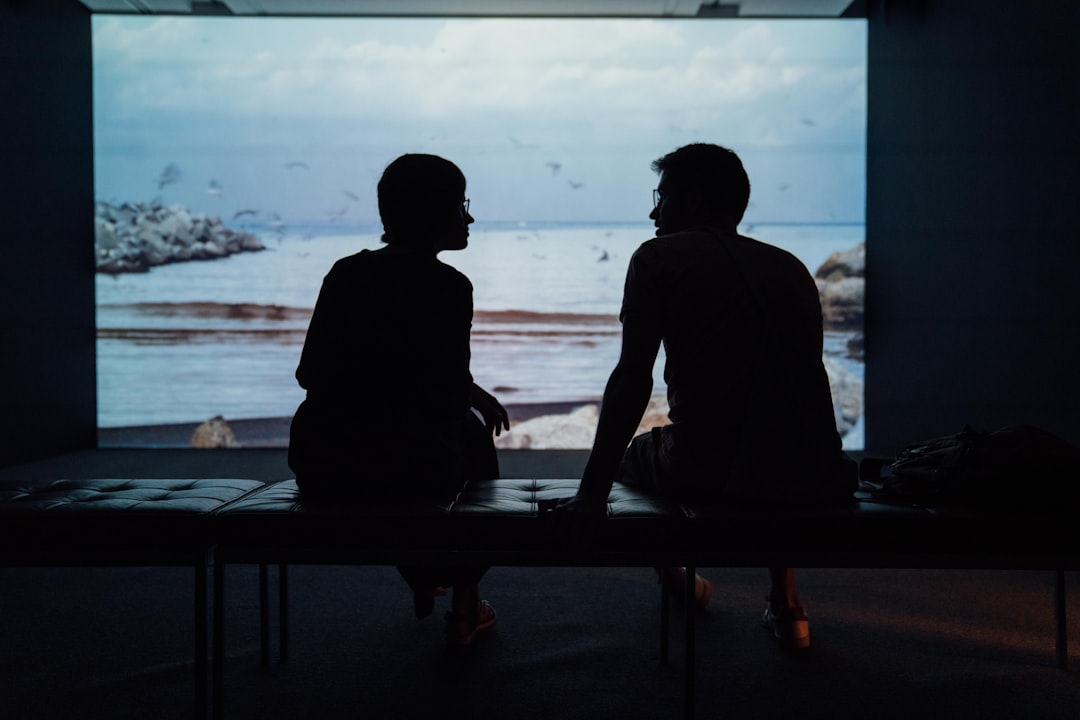When you think about perception, it’s easy to assume that what you see, hear, or feel is an accurate reflection of reality. However, the truth is far more complex. Your brain processes sensory information and constructs a version of reality that may not align with the actual world around you.
This phenomenon is known as the illusion of perceptual accuracy. You might find yourself convinced that your interpretation of an event or situation is correct, only to discover later that your perception was influenced by various factors, leading to a distorted understanding. Consider how your senses can be deceived.
Optical illusions are a prime example; they demonstrate how your visual system can misinterpret information. For instance, when you look at a picture that appears to be moving, your brain is tricked into perceiving motion where there is none. This illustrates that your perception is not merely a passive reception of stimuli but an active construction influenced by context, prior knowledge, and even emotional states.
The realization that your perception can be flawed invites you to question the reliability of your senses and encourages a more critical approach to interpreting the world around you.
Key Takeaways
- Perceptual accuracy is an illusion, as our brains often fill in gaps and make assumptions based on limited information.
- Expectations heavily influence perception, leading us to see and interpret things in line with what we anticipate.
- Attention plays a crucial role in shaping perception, as what we focus on can greatly impact how we perceive the world around us.
- Past experiences have a significant impact on perception, as they shape our understanding and interpretation of new information.
- Emotions are closely linked to perception, as our emotional state can color how we perceive and interpret the world.
- Perceptual filters have limitations, as they can lead to biases and inaccuracies in our perception of reality.
- Suggestion has a powerful influence on perception, as external cues and influences can shape how we perceive things.
- Culture and society play a significant role in shaping perception, as they influence our understanding of what is normal or acceptable.
- Biases and stereotypes can heavily influence perception, leading us to make assumptions and judgments based on preconceived notions.
- Memory plays a key role in shaping perception, as our past experiences and memories can impact how we interpret new information.
- Understanding the hidden truth about human perception has implications for how we interact with the world and each other.
The Influence of Expectations on Perception
Your expectations play a significant role in shaping how you perceive the world. When you approach a situation with preconceived notions, those beliefs can color your interpretation of events. For example, if you enter a restaurant expecting poor service based on previous experiences or reviews, you may perceive the staff’s actions as unfriendly, even if they are simply busy or preoccupied.
This expectation can create a self-fulfilling prophecy, where your negative outlook influences your experience and reinforces your initial belief. Moreover, expectations can also enhance your perception in positive ways. If you anticipate a concert to be exhilarating, your heightened excitement may lead you to perceive the music as more vibrant and engaging than it might objectively be.
This interplay between expectation and perception highlights the subjective nature of your experiences. By recognizing how your expectations shape your perceptions, you can cultivate a more open-minded approach to new experiences, allowing for a richer and more nuanced understanding of the world.
The Role of Attention in Shaping Perception

Attention is another critical factor that influences how you perceive your surroundings. Your brain has limited resources, and it cannot process every detail in your environment simultaneously. As a result, you selectively focus on certain aspects while filtering out others.
This selective attention can significantly alter your perception of reality. For instance, when you concentrate on a conversation in a crowded room, you may become oblivious to background noise or other conversations happening around you. This phenomenon can lead to both positive and negative outcomes.
On one hand, focusing your attention allows you to engage deeply with specific stimuli, enhancing your understanding and appreciation of those elements. On the other hand, it can also cause you to miss important details or context that could provide a fuller picture of the situation. By being aware of how attention shapes your perception, you can practice mindfulness and strive to broaden your focus when necessary, ensuring that you don’t overlook critical information.
The Impact of Past Experiences on Perception
| Participant | Age | Gender | Previous Traumatic Experience | Perception of Safety |
|---|---|---|---|---|
| 1 | 25 | Male | Yes | Heightened |
| 2 | 30 | Female | No | Normal |
| 3 | 40 | Male | Yes | Heightened |
| 4 | 22 | Female | No | Normal |
Your past experiences significantly influence how you perceive new situations.
For instance, if you’ve had a negative experience with a particular breed of dog, you may feel anxious or fearful when encountering similar dogs in the future, regardless of their demeanor.
This learned response illustrates how past experiences can create perceptual biases that affect your interactions with the world. Additionally, positive experiences can also shape your perceptions in beneficial ways. If you’ve had enriching interactions with people from diverse backgrounds, you’re likely to approach new encounters with an open mind and curiosity.
Recognizing the impact of your past experiences on your current perceptions allows you to challenge biases and cultivate a more inclusive worldview.
The Connection Between Emotions and Perception
Emotions play a pivotal role in shaping how you perceive reality. Your emotional state can color your interpretations and influence what you notice in any given situation. For example, when you’re feeling happy, you’re more likely to perceive events positively and notice the good in others.
Conversely, when you’re feeling down or anxious, negative aspects may stand out more prominently, leading to a skewed perception of reality. This connection between emotions and perception underscores the importance of emotional awareness. By acknowledging how your feelings influence your perceptions, you can take steps to manage your emotional state and mitigate its impact on your interpretations.
Practicing emotional regulation techniques can help you approach situations with greater clarity and objectivity, allowing for a more balanced understanding of the world around you.
The Limitations of Perceptual Filters

Perceptual filters are mental frameworks through which you interpret sensory information. These filters are shaped by various factors such as culture, upbringing, and personal beliefs. While they help you make sense of the world, they also impose limitations on your perception.
For instance, if you’ve been raised in an environment that emphasizes certain values or norms, those beliefs may filter how you interpret behaviors or situations that deviate from those norms. These limitations can lead to misunderstandings or misinterpretations when encountering perspectives that differ from your own. By recognizing the existence of these perceptual filters, you can work towards expanding your understanding and challenging preconceived notions.
Engaging with diverse viewpoints and seeking out new experiences can help broaden your perceptual filters, allowing for a richer and more nuanced understanding of the world.
The Power of Suggestion in Shaping Perception
The power of suggestion is another fascinating aspect of human perception. You may not realize how easily your perceptions can be influenced by external cues or suggestions from others. For example, if someone tells you that a particular painting is famous for its vibrant colors before you see it, you’re likely to perceive those colors as more vivid than if you’d approached it without any prior information.
This phenomenon highlights the malleability of perception and underscores the importance of critical thinking. Being aware of how suggestions can shape your perceptions allows you to approach information with skepticism and discernment. By questioning the sources of influence in your life, you can cultivate a more independent perspective that is less susceptible to external manipulation.
The Role of Culture and Society in Shaping Perception
Culture and society play significant roles in shaping how you perceive the world around you. Your cultural background influences not only what you value but also how you interpret behaviors and events. For instance, gestures that are considered polite in one culture may be perceived as rude in another.
This cultural lens affects everything from communication styles to social norms. Understanding the impact of culture on perception encourages empathy and open-mindedness when interacting with individuals from diverse backgrounds. By recognizing that others may have different interpretations based on their cultural experiences, you can foster more meaningful connections and reduce misunderstandings.
Embracing cultural diversity enriches your own perceptions and broadens your understanding of human behavior.
The Influence of Biases and Stereotypes on Perception
Biases and stereotypes are pervasive influences that shape how you perceive others and interpret their actions. These mental shortcuts often arise from societal conditioning and can lead to oversimplified views of individuals based on their race, gender, or other characteristics. For example, if you’ve been exposed to negative stereotypes about a particular group, those biases may unconsciously affect how you perceive members of that group in real-life situations.
Recognizing these biases is crucial for fostering more equitable interactions with others. By actively challenging stereotypes and seeking to understand individuals as unique beings rather than representatives of a group, you can cultivate a more nuanced perspective that values diversity and individuality. This awareness not only enhances your interpersonal relationships but also contributes to creating a more inclusive society.
The Role of Memory in Shaping Perception
Memory plays an integral role in shaping how you perceive current experiences based on past events. Your recollections influence not only what you expect but also how you interpret new information. For instance, if you’ve had positive experiences at a particular location in the past, you’re likely to approach future visits with optimism and enthusiasm.
However, memory is not infallible; it is subject to distortion over time. Recollections can be influenced by emotions or external narratives, leading to altered perceptions of past events. Understanding this dynamic allows you to approach both memories and current experiences with greater awareness.
By recognizing that memory shapes perception but is also fallible, you can strive for a more balanced view that acknowledges both past influences and present realities.
The Implications of Understanding the Hidden Truth About Human Perception
Understanding the complexities of human perception has profound implications for how you navigate the world around you. By recognizing that perception is not merely a reflection of reality but rather an intricate interplay of various factors—such as expectations, emotions, culture, and memory—you empower yourself to approach life with greater awareness and critical thinking. This awareness fosters empathy and understanding in interpersonal relationships as well.
When you acknowledge that others’ perceptions are shaped by their unique experiences and biases, it becomes easier to engage in meaningful dialogue and bridge gaps between differing viewpoints. Ultimately, embracing the hidden truths about human perception allows for personal growth and deeper connections with others while enriching your overall experience of life itself.
In exploring the hidden truth about human perception, it’s fascinating to consider how our understanding of reality is often shaped by unseen cognitive processes. A related article on this topic can be found on Freaky Science, which delves into the complexities of how our brains interpret sensory information. This article provides insights into the mechanisms that influence our perception, challenging the notion of an objective reality. For a deeper dive into these intriguing concepts, you can read more about it on their website by visiting Freaky Science.
WATCH THIS! The Dark Energy Inside Your Brain
FAQs
What is human perception?
Human perception refers to the way in which individuals interpret and make sense of the sensory information they receive from the environment. This includes the processes of seeing, hearing, touching, tasting, and smelling, as well as the cognitive processes involved in interpreting and understanding this sensory input.
What are the factors that influence human perception?
Human perception is influenced by a variety of factors, including biological, psychological, and environmental factors. Biological factors such as genetics, age, and sensory abilities can impact perception, while psychological factors such as attention, memory, and emotions also play a role. Additionally, environmental factors such as culture, social context, and past experiences can shape how individuals perceive the world around them.
How does human perception differ from person to person?
Human perception can vary significantly from person to person due to individual differences in sensory abilities, cognitive processes, and past experiences. For example, two people may perceive the same visual stimulus differently based on their unique visual acuity, attentional focus, and past experiences with similar stimuli.
What are some common misconceptions about human perception?
One common misconception about human perception is that it is a passive and objective process. In reality, perception is an active and subjective process that is influenced by a variety of factors, including individual differences and contextual factors. Another misconception is that perception accurately reflects the objective reality of the world, when in fact it is a constructed and interpreted representation of the world based on sensory input and cognitive processes.
How does understanding human perception impact daily life?
Understanding human perception can have a significant impact on daily life in various ways. For example, knowledge of perceptual processes can inform the design of products and environments to better accommodate human sensory and cognitive abilities. Additionally, understanding how perception is influenced by factors such as attention and memory can help individuals make more informed decisions and better understand their own thought processes.
